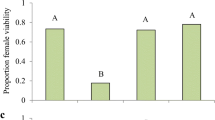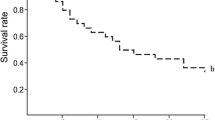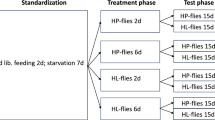Abstract
Although many predatory insects appear to be opportunistic generalists in their selection of prey, only a subset of prey species may in fact serve as “essential foods” capable of supporting immature growth and adult reproduction. It has been suggested that other, “alternative foods” serve only to maintain the predator when essential foods are not available, but little research has evaluated the significance of a mixed diet of essential and alternative foods for predator growth or reproduction. Here we test the general hypothesis that although alternative prey may be inadequate to support reproduction when consumed alone by adult predators, consumption of such prey may enhance the predator's reproductive output when the predator also has access to essential prey. We compared egg production by two aphidophagous lady beetles, Coccinella septempunctata and C. transversoguttata, provided with diets of aphids (essential prey) and weevils (alternative prey). As predicted, female predators produced greater numbers of eggs when a diet of pea aphids in limited number was supplemented by alfalfa weevil larvae. The predators laid no eggs when provided only with weevils or only with sugar. But once aphids were added to the diet, females of C. transversoguttata (but not C. septempunctata) laid eggs in greater numbers when they had fed previously on weevils than on sugar. Females of both species also produced eggs in modest numbers when provided with both weevils in excess and sugar, but this diet supported a lower rate of egg production than did a diet of weevils in excess plus a limited number of aphids. Although C. septempunctata has a longer history of association with the alfalfa weevil than does C. transversoguttata, the former species was not more effective in exploiting this alternative prey in support of reproduction. The tendency of generalist predators such as adult lady beetles to consume alternative as well as essential prey probably enhances considerably their ability to capitalize on short-lived and scattered opportunities as they seek out suitable sites in which to reproduce.
Similar content being viewed by others
Author information
Authors and Affiliations
Additional information
Received: 11 May 1998 / Accepted: 1 May 1999
Rights and permissions
About this article
Cite this article
Evans, E., Stevenson, A. & Richards, D. Essential versus alternative foods of insect predators: benefits of a mixed diet. Oecologia 121, 107–112 (1999). https://doi.org/10.1007/s004420050911
Issue Date:
DOI: https://doi.org/10.1007/s004420050911




